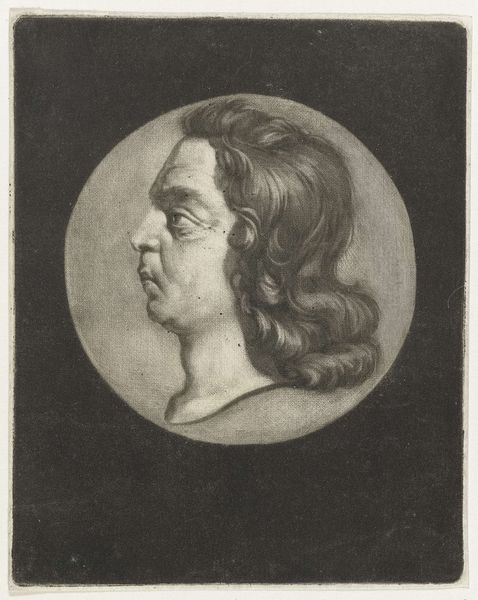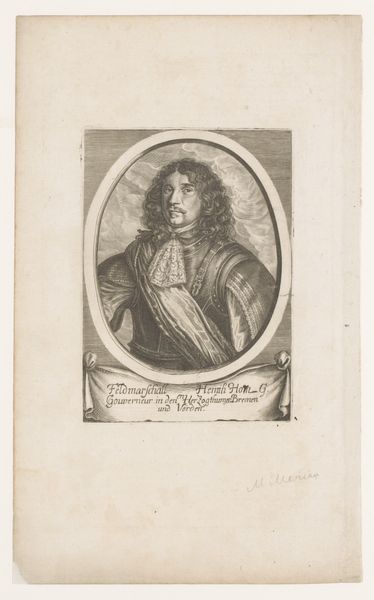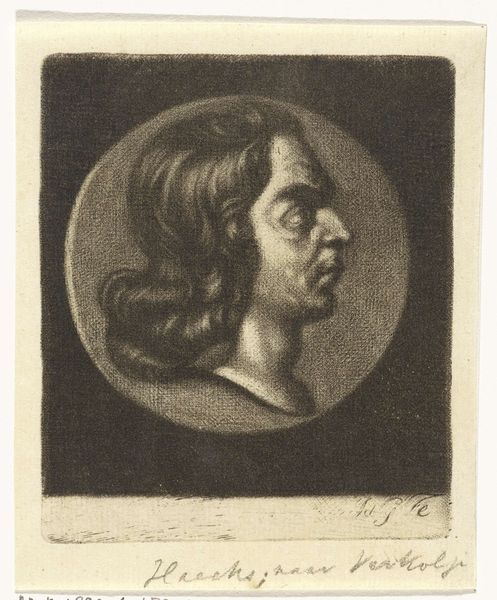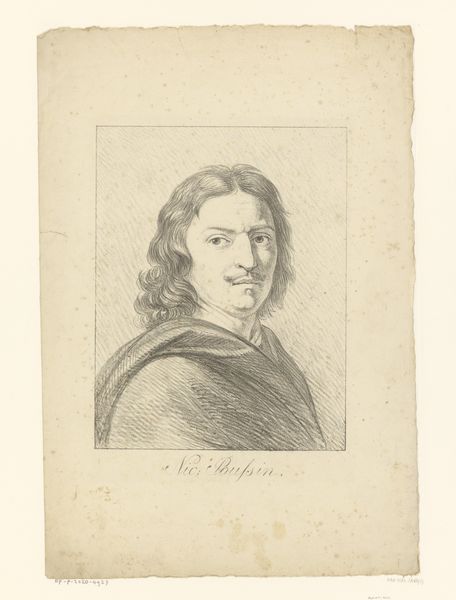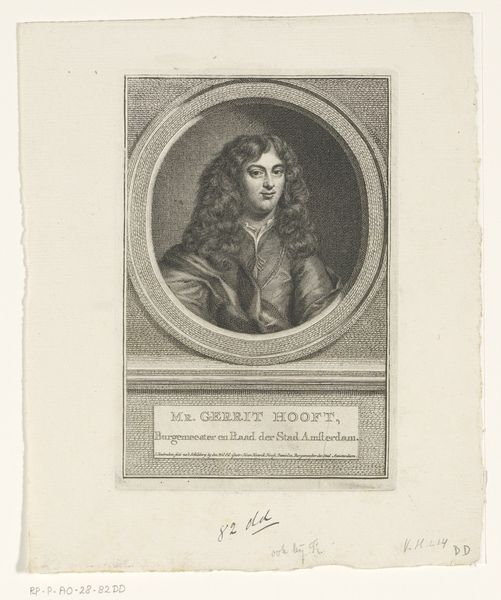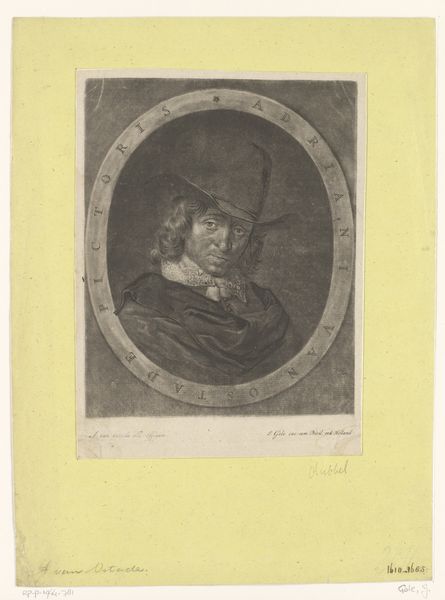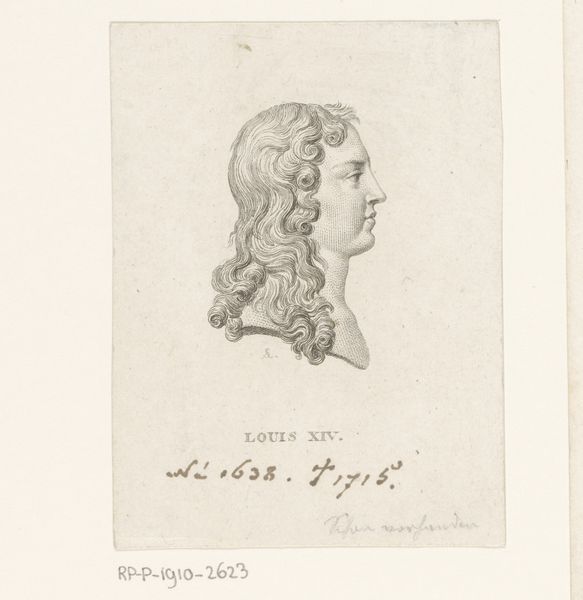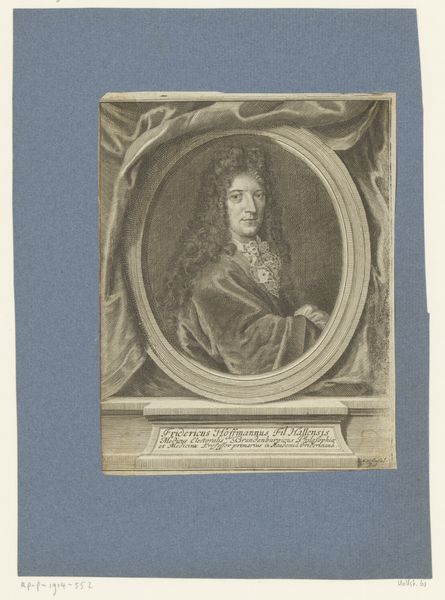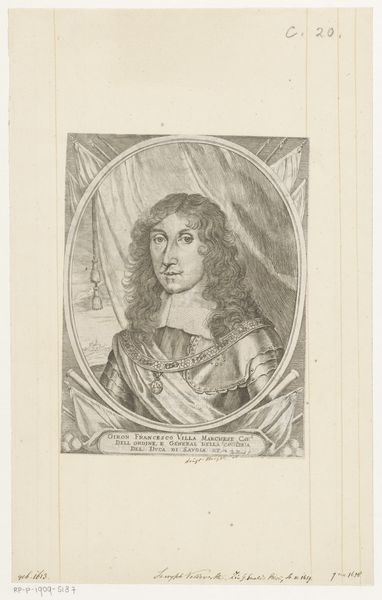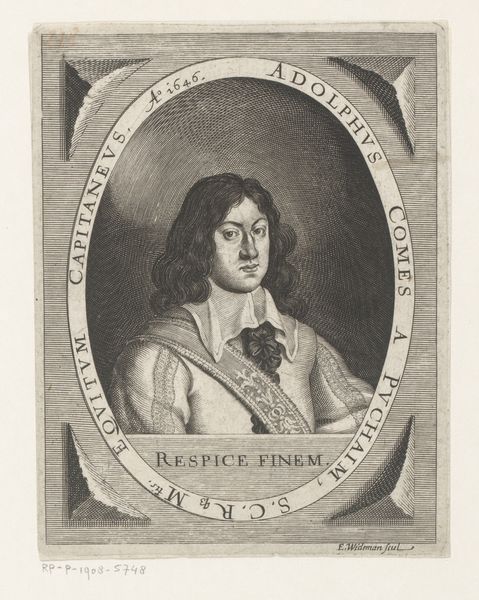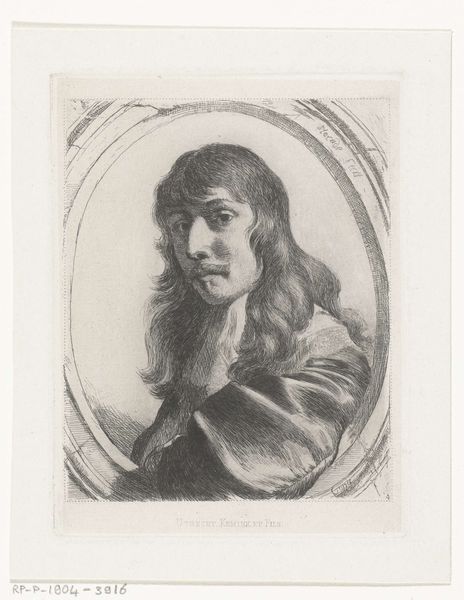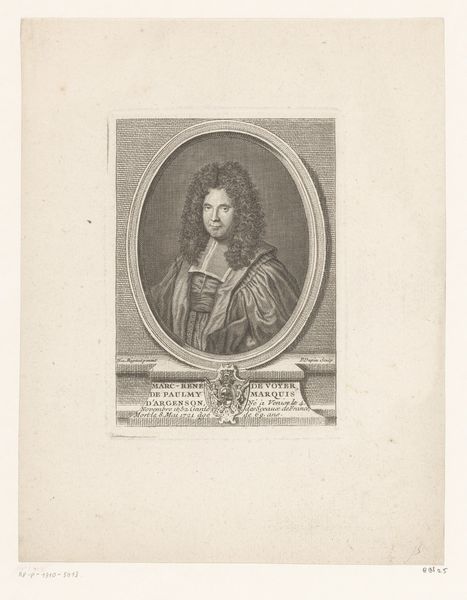
engraving
#
portrait
#
baroque
#
figuration
#
portrait reference
#
framed image
#
portrait drawing
#
history-painting
#
engraving
#
fine art portrait
Dimensions: height 192 mm, width 146 mm
Copyright: Rijks Museum: Open Domain
Curator: Here we have a look at "Borstbeeld van Maria Magdalena" by Herman Hendrik Quiter, dating back to 1678. It's an engraving, a print if you will. It depicts a portrait within an oval frame. Editor: She has this really soulful look in her eyes, doesn't she? Sort of longing, or maybe… remorseful? The soft lighting definitely adds to the melancholic mood. Curator: Absolutely. As an engraving, the piece is, of course, reproducible, allowing for a wider distribution of religious imagery. The choice of subject and the creation of prints at that time suggests interesting avenues of understanding piety and print culture in the late 17th century. Editor: I'm just thinking about Quiter. Did he labour away painstakingly, or were these prints churned out factory-style by skilled artisans? There's something about that repetitive hand movement in printmaking that connects it to a kind of… devotional act itself? Curator: The engraving medium demands skilled labor and controlled production; certainly not assembly line speed, so your interpretation resonates. Let’s not forget, these were not just artistic pieces, but commercial products for religious and educational dissemination. Editor: The Baroque flourish is certainly evident in the dramatic lighting and composition of the image. The delicate lines used for her hair—it must have taken considerable time to create that texture in an engraving. What statement about the value and depiction of labour is the engraver aiming to communicate? Curator: Precisely, the labor is intricately tied to Baroque sensibilities but consider this: the 'after' suggests that he probably reproduced a drawing after an image by an established painter – the reference to ‘A. van Dyck. Invenit’ below. The labor here may be tied with acts of repetition in a workshop culture. Editor: Huh! Very telling indeed. Well, regardless of the exact circumstances of its making, the end product manages to pull me in. The subject feels emotionally available, despite all the material considerations. Curator: It’s intriguing how this piece can simultaneously represent artistic expression and reflect historical socio-economic forces shaping its creation. The nuances of Baroque and the means of production inform so much about that period, even in something so ostensibly simple as a bust. Editor: Right! It also shows how far one’s reading experience and response can deviate, or get further entangled, with the artist’s and cultural values during that time. Anyway, my takeaway today is to go get some nice print paper!
Comments
No comments
Be the first to comment and join the conversation on the ultimate creative platform.
